UMKC History
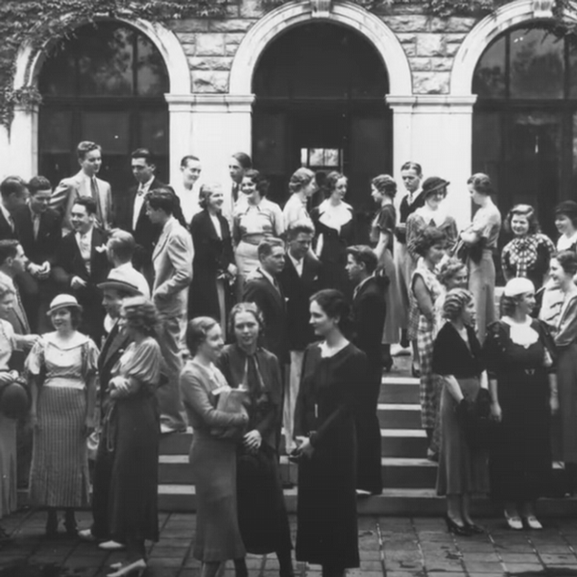
A Lasting Legacy
On a beautiful fall day in October 1933, classes commenced at the University of Kansas City (UKC) with 264 students and 17 faculty. And on that day, more than 2,000 community members, who had brought it into being, gathered on campus to celebrate their great accomplishment, which would become a hallmark of this university: civic engagement.
Expected in 2026
Healthcare Delivery and Innovation Building
The Healthcare Delivery and Innovation Building, the university’s largest capital investment to date, will enable the university to provide state-of-the-art education for the next generation of dentists and doctors
Expected in 2025
KC Streetcar stop at 51st Street
The KC Streetcar south line extension will include a southern-most stop at UMKC at 51st Street and Brookside Boulevard in 2025
Expected in 2025
Campus improvements
The Student Success Center on the fourth floor of the Miller Nichols Library and the 51st Street Pedestrian Plaza
Expected in 2025
St. Joseph School of Medicine Building
The 22,000-square-foot building will feature the latest medical teaching and learning technology and include four exam rooms designed to simulate real-world patient interactions and dedicated study and meeting spaces to support student collaboration.
2025
Carnegie R1 designation
UMKC became Kansas City’s first Carnegie R1 institution, a prestigious designation that reflects years of dedication to research, innovation and community collaboration.
2025
Foodiverse
The Foodiverse, a new on-campus dining concept, opens in the Student Union
2025
New Ph.D. programs
Eight new Ph.D. programs — electrical and computer engineering, mechanical engineering, civil engineering, computer science, economics, education, humanities and natural sciences — begin accepting students for Fall 2025
2024
National Institutes of Health funding
UMKC receives its largest National Institutes of Health funding: $8.3 million for a nationwide study of pregnant women with heart conditions to combat maternal mortality
2024
Mellon Foundation humanities funding
Mellon Foundation awards UMKC $5 million to fund student internships in humanities to aid nonprofits and research
2024
Record-breaking enrollment
For the second year in a row, UMKC enrolls the largest class of first-time college students in its history for Fall semester
2024
U.S. Cyber Command partnerships
UMKC and the Missouri Institute for Defense and Energy (MIDE) enter a collaborative and educational partnership with U.S. Cyber Command
2024
Kansas City Royals partnership
UMKC enters three-year partnership with the Kansas City Royals that creates real-world learning opportunities for students as well as alumni, employee and student engagement
2024
Bachelor of Architecture program
UMKC announces new Bachelor of Architecture program, becoming the first public university in Missouri to offer the degree
2023
Two Tech Hubs
UMKC helps secure two of 31 Tech Hubs in the U.S.: one in biologics and biomanufacturing and the other in critical materials and minerals for advanced energy
2023
Roos Read
The inaugural Roos Read campuswide and community initiative welcomes its first author to campus
2023
KC Current partnership
UMKC enters partnership with Kansas City Current that offers undergraduate and graduate UMKC opportunities for Current players and athletic mentorship to UMKC women’s soccer players
2023
Supplemental Instruction turns 50
Supplemental Instruction, the student-led learning approach developed at UMKC, turns 50
2023
Men of Character Academy
UMKC introduces Men of Character Academy, an initiative to increase engagement and sense of belonging on campus for all students
2023
Roos Mobb
Members of the UMKC community gather for the first-ever Roos Mobb pop-up merch event, a celebration of UMKC alumni-owned businesses
2023
Divine Nine Garden
UMKC Divine Nine Garden, representing the Divine Nine Black Greek organizations that make up the National Pan-Hellenic Council, opens in the heart of campus as a tribute to the contributions and presence of the Divine Nine fraternities and sororities
2023
Largest class of first-time college students in UMKC history
The largest class of first-time college students in UMKC history enrolls for Fall semester
2023
Kansas City Chiefs partnership
UMKC gains a football team through a five-year partnership with Kansas City Chiefs, creating scholarship, mentorship and leadership opportunities for students
2023
New recreational fields
Two new recreational fields, one equipped for soccer and the other for cricket, open on Oak Street
2023
Biomedical engineering program
UMKC announces biomedical engineering program with both graduate and undergraduate degrees, starting Fall semester
2023
NSF microelectronics hub
UMKC is chosen by the National Science Foundation to lead development of microelectronics hub in Missouri and Kansas
2023
FirstGen Forward Network Leader
UMKC is designated by the national organization First Gen Forward as a FirstGen Forward Network Leader for the success of its First Gen Roo program that provides academic and personal support services to students who are the first in their families to attend college
2022
Robert W. Plaster Free Enterprise and Research Center
The Robert W. Plaster Free Enterprise and Research Center opens, providing state-of-the-art resources that support entrepreneurship, small business development and business growth to the UMKC business community
2022
In-state tuition for all eligible U.S. students
UMKC announces the Roo Nation scholarship, offering in-state tuition for eligible students across the United States.
2022
Academic realignment
UMKC completes the academic unit realignment as part of the UMKC Forward initiative, creating three new schools and paving the way for interdisciplinary cooperation and discovery
2022
Kansas City Zoo & Aquarium partnership
UMKC and the Kansas City Zoo & Aquarium announce a five-year partnership, honoring a relationship that dates back almost 90 years
2021
Professional Career Escalators
UMKC enrolls the first cohort in the Professional Career Escalators program, which shifts the focus from degree attainment to career readiness, transforming the higher education model
2021
Corbin Roo sculpture
The Corbin Roo sculpture is unveiled and quickly becomes a photo hot spot for students and community members
2021
St. Joseph campus
The UMKC School of Medicine, in partnership with Mosaic Life Care, expands its program to St. Joseph, Missouri, to address the state’s rural physician shortage
2021
UMKC Forward plan
UMKC rolls out its UMKC Forward plan, investing more than $50 million in the next five years on five key investments designed to achieve growth and excellence for Kansas City’s university
2020
NextGen Data Science and Analytics Innovation Center,
The NextGen Data Science and Analytics Innovation Center, or dSAIC, based at UMKC, provides data analytics to power the NextGen Precision Health initiative and other precision health research across the University of Missouri System’s four universities
2020
PPE donation
In response to the COVID-19 pandemic, UMKC donates tens of thousands of PPE to local hospitals
2020
KC Roos women’s basketball wins conference championship
KC Roos women’s basketball team wins the Western Athletic Conference championship
2020
Roos Advocate for Community Change
UMKC announces Roos Advocate for Community Change, a campuswide effort addressing systemic racism on an array of fronts on campus and in our community
2020
Race, Ethnic and Gender Studies program
UMKC combines three areas of study into one program, Race, Ethnic and Gender Studies, an interdisciplinary program that offers minors in three interest areas: Black studies; Latinx and Latin American studies and women’s, gender and sexuality studies
2019
IDEAS, Health Equity Institute and TalentLink
UMKC introduces the Institute for Data Education, Analytics and Science (IDEAS), providing workforce development, accelerated research and industry partnerships, the Health Equity Institute, a new initiative to ensure equal opportunity for improved health and TalentLink, a skill-development initiative
2019
Dentistry sim lab
The School of Dentistry unveils multi-million-dollar, state-of-the-art simulation lab featuring fully equipped, ergonomic work stations
2019
KC Roos rejoin Summit League
KC Athletics rejoins Summit League, a Division I athletics league
2019
UMKC Conservatory
The UMKC Department of Theatre merges with the UMKC Conservatory of Music and Dance to become the UMKC Conservatory
2018
$20 million in new scholarships
UMKC and KC Scholars, now known as Great Jobs KC Scholars, expand partnership to provide $20 million in new scholarships to low- to modest-income students from the Greater Kansas City metropolitan area
2018
KC Roos women's soccer win conference championship
KC Roos women’s soccer wins second consecutive Western Athletic Conference regular season championship
2017
Health Sciences District
A dozen neighboring healthcare institutions on Kansas City’s Hospital Hill form a cooperative partnership to become the Health Sciences District, creating new potential for collaboration on research, grants, community outreach and shared wellness for employees, faculty, students and surrounding neighborhoods
2015
Miller Nichols Library and Learning Center
The Miller Nichols Library is transformed into the Miller Nichols Library and Learning Center, redefining the role of the library in campus life as a space for collaborative education, student and faculty development and community outreach, and earns LEED certification from the U.S. Green Building Council
2014
Starr Women’s Hall of Fame
Starr Women’s Hall of Fame is established to recognize women from the Metropolitan Kansas City area and preserve the legacy of their accomplishments
2014
Springfield pharmacy campus
The School of Pharmacy opens campus in Springfield, Missouri, to expand outreach to underserved areas
2013
Henry W. Bloch Executive Hall for Entrepreneurship and Innovation
Henry W. Bloch School of Management opens the LEED Gold certified Henry W. Bloch Executive Hall for Entrepreneurship and Innovation, home to graduate, executive and entrepreneurship programs
2012
Atterbury Student Success Center
The Atterbury Student Success Center opens with offices to provide integrated services to promote student academic success and graduation goals
2011
Avanzando, Moving Forward Together mentorship program
The Avanzando, Moving Forward Together program establishes a faculty-student mentorship program designed to support recipients in their academic and career pursuits
2010
Student Union
The new 10,000 square-foot, U.S. Green Building Council LEED Gold-certified Student Union quickly becomes a hub for students and community members on campus
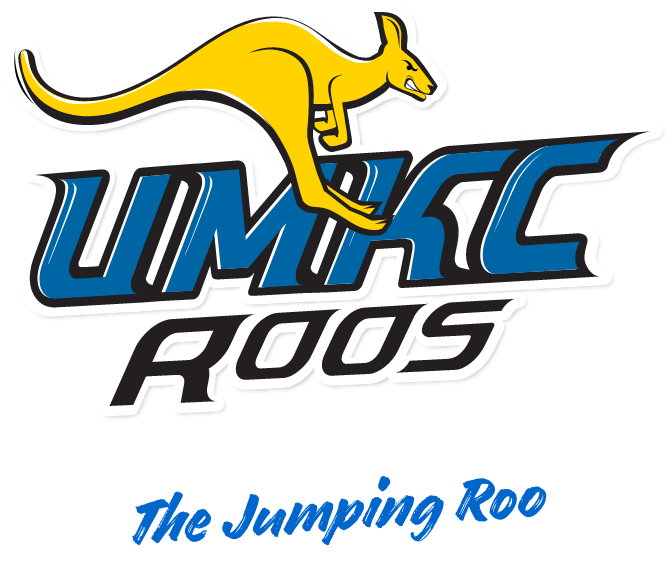
2009
UMKC Foundation
The UMKC Foundation, the official fundraising and private gift-receiving organization for UMKC, is established
2009
Durwood Soccer Stadium and Recreational Field
Durwood Soccer Stadium and Recreational Field opens
2007
Health Sciences Building
The Health Sciences Building opens on Hospital Hill to house school of Nursing and Pharmacy
2003
LGBT Programs and Services
The LGBT Programs and Services is established to serve gay, lesbian and transgender students
1999
Carnegie Research 2 status
UMKC achieves Carnegie Research 2 status, or "Doctoral Universities – High research activity," indicating that a university has a high level of research activity
1996
Crescendo Benefit Gala
Friends of the Conservatory establish the Crescendo Benefit Gala to raise money for scholarships
1991
Miller Nichols Library renovation
UMKC renovates the library to include more individual and collaborative spaces for students, resources for faculty, and several unique archival collections that serve scholars and the Kansas City community and renames it in honor of Miller Nichols, who donated $1.5 million to complete the fourth floor
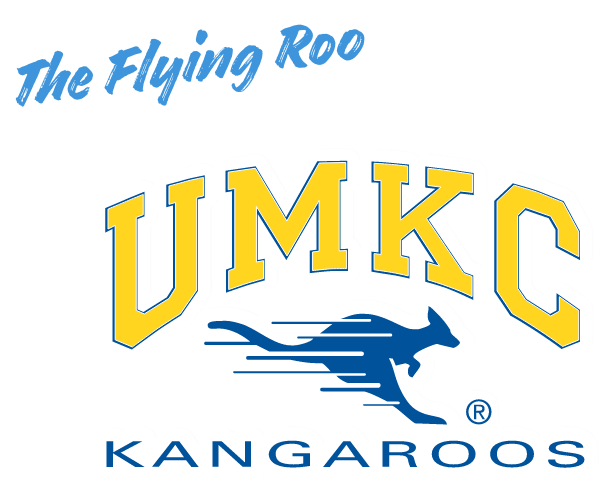
1988
Multicultural Student Affairs
The Office of Multicultural Student Affairs opens
1987
Division I basketball
The KC Roos' men's and women's basketball teams play in NCAA Division I for the first time
1986
Henry W. Bloch School of Management
Henry W. Bloch provides an endowment to support and name the business school
1985
Swinney Recreation Center
Swinney Gym expanded to become multi-purpose facility is started at Swinney Recreation Center
1979
School of Nursing
After years of offering degrees in nursing through the College of Arts and Sciences, the UM Board of Curators votes to establish the UMKC School of Nursing
1979
James C. Olson Performing Arts Center
Known as the PAC, the James C. Olson Performing Arts Center provides a home to the UMKC Conservatory of Music and Dance and the Kansas City Repertory Theatre
1971
School of Medicine
Established to meet the healthcare needs of Missouri, the UMKC School of Medicine opens with 40 students who learn under an alternative docent approach to medical education
1970
Martin Luther King Jr. celebration
The African American Student Union (TAASU) hosts the first Freedom Breakfast, created to commemorate the legacy of Martin Luther King Jr., promote unity and harmony within our community
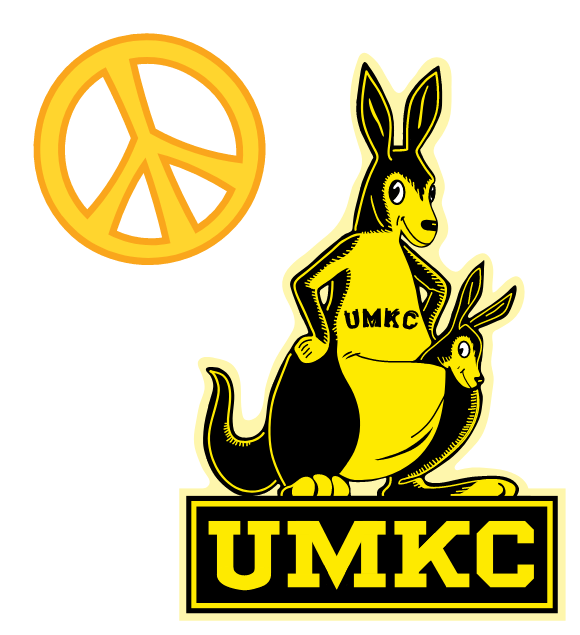
1969
General Library
The three-story structure known as the General Library opens
1969
The African American Student Union
Advised and supported by Multicultural Student Affairs (MSA), the African American Student Union (TAASU) is founded to create a sense of belonging and empowerment for African American students. TAASU is
1967
The Family Center
The Family Center, later renamed the Women's Council, is founded by Martha Jane Starr
1967
Enrollment increase
Enrollment increases to nearly 8,500 students
1964
Missouri Repertory Theatre
The Missouri Repertory Theatre is started and is the home of the UMKC professional theater in residence
1963
University of Missouri System
The University of Kansas City joins the University of Missouri System and becomes UMKC
1963
Integrated trivia team
University of Kansas City gains the national spotlight as first interracial team on televised trivia competition
1959
Kansas City Conservatory of Music
The Kansas City Conservatory of Music, established in 1906, joins the University of Kansas City
1955
On-campus living
Ground is broken on a new, four-story first brick dormitory
1954
School of Education
The School of Education is established
1953
School of Business Administration
The School of Business Administration is established
1953
KCUR
KCUR, the Kansas City NPR affiliate, begins broadcasting
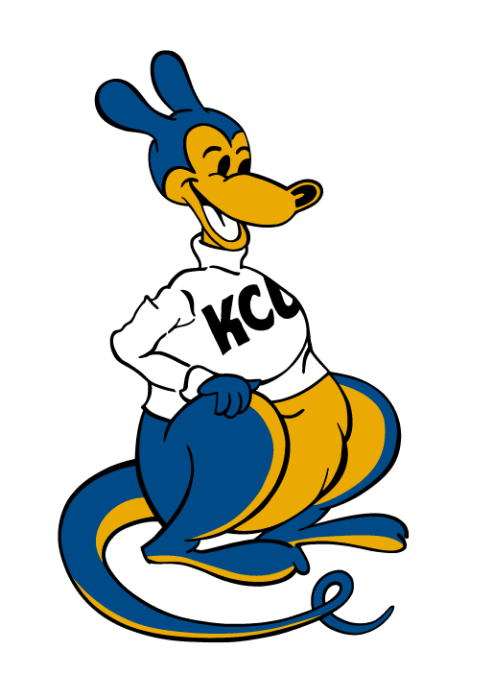
1947
UKC votes to integrate
The University of Kansas City votes to integrate
1945
Truman receives honorary degree
Law School alumnus President Harry Truman receives University of Kansas City's first honorary degree on the Quad
1943
School of Pharmacy
Originally organized in 1885 as the Pharmaceutical Department of the University of Kansas City, this school joins the University of Kansas City
1941
Swinney Gymnasium
Named in honor of Edward F. Swinney, chairman of First National Bank of Kansas City (now part of Bank of America), the E.F. Swinney Gymnasium opens
1941
School of Dentistry
Founded in 1881 as the Kansas City Dental College, the school affiliates with the University of Kansas City
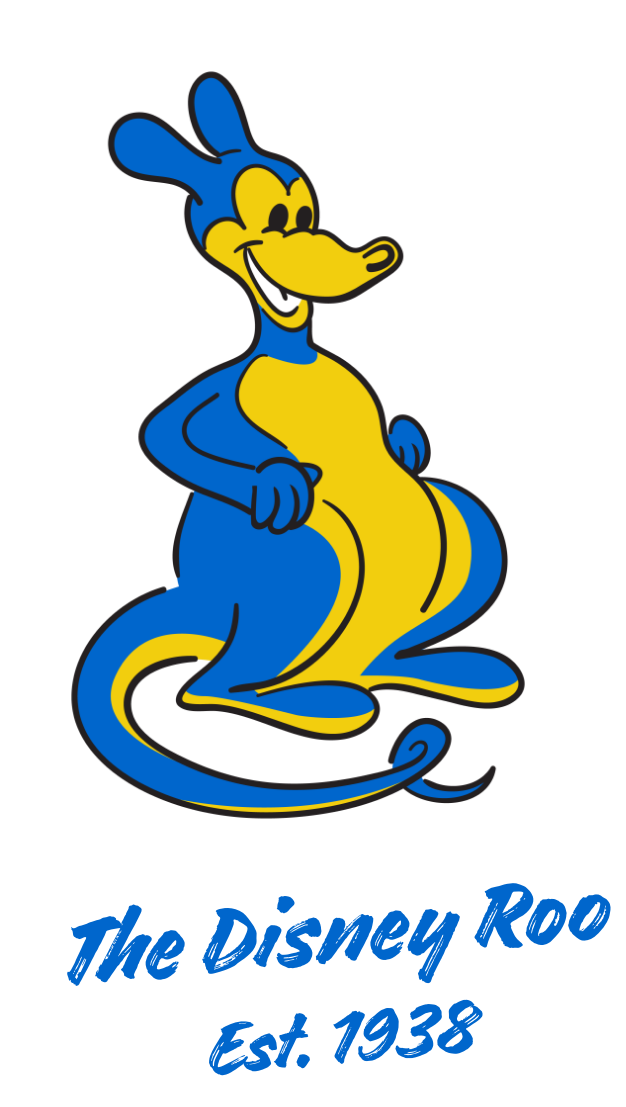
1938
School of Law
Founded in 1895 as a public law school by three young lawyers, the Kansas City School of Law merges with the University of Kansas City
1937
Disney Roo
The Kangaroo drawn by Walt Disney, becomes the official mascot of University of Kansas City
1936
Alumni Association
Eighty members of the first UKC class graduate and start the Alumni Association
1934
Blue and gold
Students vote for blue and gold as the official school colors
1933
UKC dedicated
The University of Kansas City is officially dedicated on October 1 with 264 students and 17 faculty
1930
40 acres
With the idea of creating a university to provide skilled employees for Kansas City, local businessman and philanthropist William Volker purchases 40 acres for what will become the UKC campus
